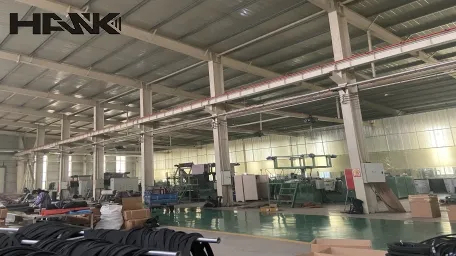- Arabic
- French
- Russian
- Spanish
- Portuguese
- Turkish
- Armenian
- English
- Albanian
- Amharic
- Azerbaijani
- Basque
- Belarusian
- Bengali
- Bosnian
- Bulgarian
- Catalan
- Cebuano
- Corsican
- Croatian
- Czech
- Danish
- Dutch
- Afrikaans
- Esperanto
- Estonian
- Finnish
- Frisian
- Galician
- Georgian
- German
- Greek
- Gujarati
- Haitian Creole
- hausa
- hawaiian
- Hebrew
- Hindi
- Miao
- Hungarian
- Icelandic
- igbo
- Indonesian
- irish
- Italian
- Japanese
- Javanese
- Kannada
- kazakh
- Khmer
- Rwandese
- Korean
- Kurdish
- Kyrgyz
- Lao
- Latin
- Latvian
- Lithuanian
- Luxembourgish
- Macedonian
- Malgashi
- Malay
- Malayalam
- Maltese
- Maori
- Marathi
- Mongolian
- Myanmar
- Nepali
- Norwegian
- Norwegian
- Occitan
- Pashto
- Persian
- Polish
- Punjabi
- Romanian
- Samoan
- Scottish Gaelic
- Serbian
- Sesotho
- Shona
- Sindhi
- Sinhala
- Slovak
- Slovenian
- Somali
- Sundanese
- Swahili
- Swedish
- Tagalog
- Tajik
- Tamil
- Tatar
- Telugu
- Thai
- Turkmen
- Ukrainian
- Urdu
- Uighur
- Uzbek
- Vietnamese
- Welsh
- Bantu
- Yiddish
- Yoruba
- Zulu
Jul . 26, 2024 23:56 Back to list
Understanding the Basics and Applications of Flat Transmission Belts for Industrial Machinery Efficiency
Understanding Flat Transmission Belts An Essential Component in Mechanical Engineering
Flat transmission belts have been an integral part of mechanical power transmission systems for many years. These belts are designed to transfer power between pulleys, allowing for the efficient movement of machinery and various industrial applications. With their simple yet effective design, flat belts have maintained their relevance even in modern engineering, offering specific advantages that other types of belts might lack.
The Design and Composition of Flat Transmission Belts
A flat transmission belt is typically made from a flexible material, such as rubber or leather, sometimes reinforced with fibers for added strength. The surface of the belt is flat, which ensures a larger contact area with the pulleys, leading to improved grip and reduced slippage. The width and length of these belts can vary significantly, allowing them to accommodate different machinery configurations and power requirements. Additionally, modern advancements have introduced synthetic materials that enhance durability and resistance to wear and tear.
Advantages of Flat Transmission Belts
One of the primary advantages of flat transmission belts is their ability to handle high levels of power when properly tensioned. This makes them suitable for applications where substantial force is required. Furthermore, the flat design allows for running at high speeds, increasing efficiency in power transmission. The absence of complex mechanisms means that the maintenance and replacement of these belts are relatively straightforward compared to other types of belts, such as V-belts or cogged belts.
Another significant advantage is their adaptability. Flat belts can be used in various configurations, including long runs with multiple pulleys, which is beneficial in conveyor systems and industrial manufacturing processes. Their flexibility also allows for adjustments in tension and alignment, accommodating shifts in operational requirements without significant downtime.
Applications in Industry
flat transmission belt

Flat transmission belts are commonly used in various industrial applications. One prominent example is in textile manufacturing, where they transmit power from motors to weaving and spinning machines. Their smooth surface minimizes the risk of damaging delicate fabrics, making them an ideal choice in this sector. Similarly, they are utilized in agriculture machinery, such as combines and threshers, where they facilitate the transfer of mechanical power to critical components.
In the automotive industry, flat belts have been used in older vehicle designs, particularly in the drive systems of internal combustion engines. They were responsible for connecting the engine to components like the alternator and water pump, contributing to the mechanical efficiency of the vehicle.
Maintenance and Best Practices
Despite their advantages, flat transmission belts do require regular maintenance to ensure optimal performance. This includes periodic inspections for wear, ensuring proper tension, and alignment with pulleys. Any signs of fraying or damage should be addressed immediately to prevent further complications. Additionally, keeping the belts clean from debris and contaminants can help prolong their lifespan.
When installing flat belts, it is crucial to select the appropriate belt for the specific application. Factors such as the load, operating speed, and environmental conditions should be taken into account to choose the right material and size.
Conclusion
In conclusion, flat transmission belts play a crucial role in many mechanical systems, combining simplicity with efficiency. Their adaptability, ease of maintenance, and suitability for high-power applications make them a preferred choice in various industries. As technology advances, understanding the fundamental principles behind flat belts and their applications will continue to be essential for engineers and technicians alike, ensuring that these reliable components remain at the forefront of mechanical power transmission.
-
23100-KVB-901 Drive Belt for Honda VARIO | OEM Performance
NewsAug.06,2025
-
Variable Belt Drive AI Optimized for Efficiency
NewsAug.05,2025
-
High-Quality Tensioner Belt Pulley - Durable & Efficient
NewsAug.03,2025
-
Premium Timing Belt Factory | AI-Optimized Solutions
NewsAug.02,2025
-
Heat Joining Drive Belt | High-Durability Fusion Solution
NewsJul.31,2025
-
Timing Belt Video Guide: Selection, Design & Quality Insights
NewsJul.30,2025

